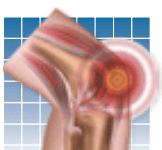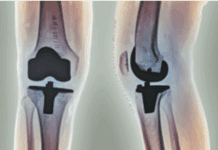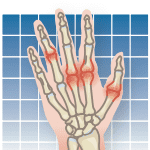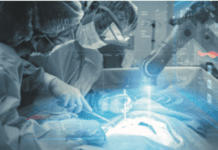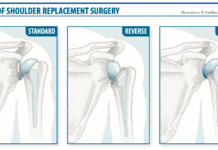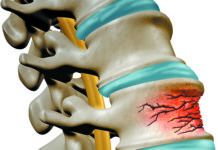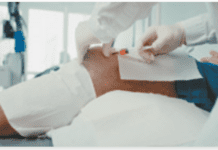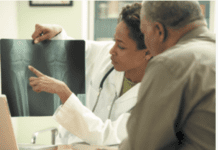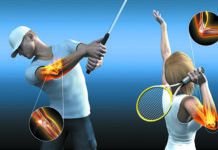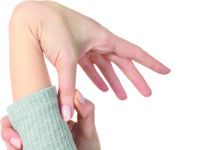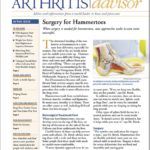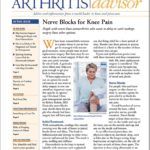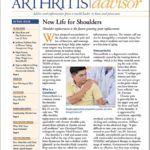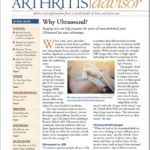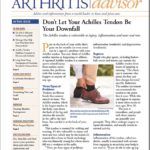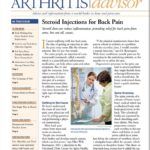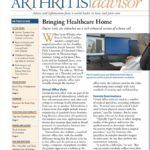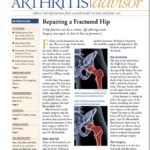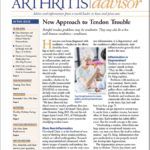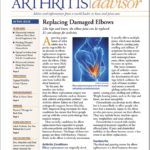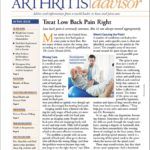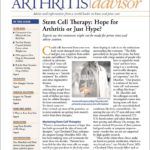Download The Full July 2019 Issue PDF
The abnormal bending of the toes known as hammertoes is a common foot deformity, especially for women. The end of the toe bends down and the middle joint sticks up. Hammertoes mainly cause difficulty fitting into shoes and corns and calluses from pressure and rubbing.
Download The Full June 2019 Issue PDF
When knee osteoarthritis worsens to a point where it can no longer be managed with nonsurgical measures, many people turn to joint replacement surgery. But there may be reasons to delay or avoid surgery. If thats the case, you arent necessarily out of luck. A genicular nerve block may help ease pain enough to get you back to functioning.
Download The Full May 2019 Issue PDF
When advanced osteoarthritis in the shoulder results in pain and loss of function, and nonsurgical treatments no longer help, joint replacement surgery may become anoption.
Download The Full April 2019 Issue PDF
When aches, pains and other symptoms stem from a problem with the musculoskeletal system (meaning the bones, muscles, cartilage, tendons, ligaments and joints) your doctor may order an imaging test to help determine the underlying cause.
Download The Full March 2019 Issue PDF
People who play sports, including basketball, soccer and tennis, can rupture the Achilles tendon from bursts of jumping or running. "The classic case is someone who plants his foot and then charges forward," says Dr. Berkowitz. The sudden movement can overstretch the tendon to the point that it tears. While this can happen to anyone, it most often occurs in men ages 30 to 50.
Download The Full February 2019 Issue PDF
For some people, an injection of a corticosteroid (commonly called a steroid), which is a powerful anti-inflammatory medication, can help relieve pain and other symptoms. But it's not right for everyone. Even when a steroid shot is appropriate, it is just one part of a comprehensive treatment plan. In addition, your physician must determine the right type of injection to give.
Download The Full January 2019 Issue PDF
Virtual doctors office visits are part of the growing trend of telemedicine, which utilizes telecommunications and other technology to exchange health information from one site to another. Telemedicine is a broad term that might include remote monitoring of a patients heart function, long distance observation of a patient in the intensive care unit, applications and devices that transmit data (such as blood pressure), or consultation between two doctors in different locations.
Download The Full December 2018 Issue PDF
Achy, stiff joints from osteoarthritis get more common as we age. Your genes also contribute to the likelihood that cartilage in joints will wear down. Osteoarthritis occurs when cartilage, which covers the ends of bones, deteriorates, causing inflammation and structural changes in the joint. This can result in varying degrees of pain and reduced function. Weight-bearing joints, such as the knees and hips, are especially vulnerable.
Download The Full November 2018 Issue PDF
Have you ever been diagnosed with tendinitis whether in the elbow, shoulder, knee, hip or heel and a corticosteroid shot didn't work? The itis in tendinitis refers to inflammation, and corticosteroids are powerful anti-inflammatory medications. It seems logical they should work.
Download The Full October 2018 Issue PDF
Agrowing population of older adults may be partly responsible for an increase in elbow replacement surgeries for fractures of the bone near the elbow. Older adults are more likely than younger people to break a bone from a fall, including the lower end of the upper arm bone (called the distal humerus).
Download The Full September 2018 Issue PDF
Imaging studies have a limited role during the early stages of back pain, yet more than half of people with low back pain receive an imaging study. People with back pain often are inappropriately told to rest and stop work. Only half of people with low back pain are prescribed exercise, which is the most effective treatment.
Download The Full August 2018 Issue PDF
Hundreds of stem cell clinics have popped up across the country, many of them hoping to cash in on the enthusiasm surrounding this treatment. The field, particularly in the past five years, has been overrun with a large number of people who have co-opted the word stem and have been using it as a marketing tool to offer therapies to patients that are as yet unproven, says Dr. Muschler. That practice is a misuse of the term stem cell and amounts to selling false hope.






